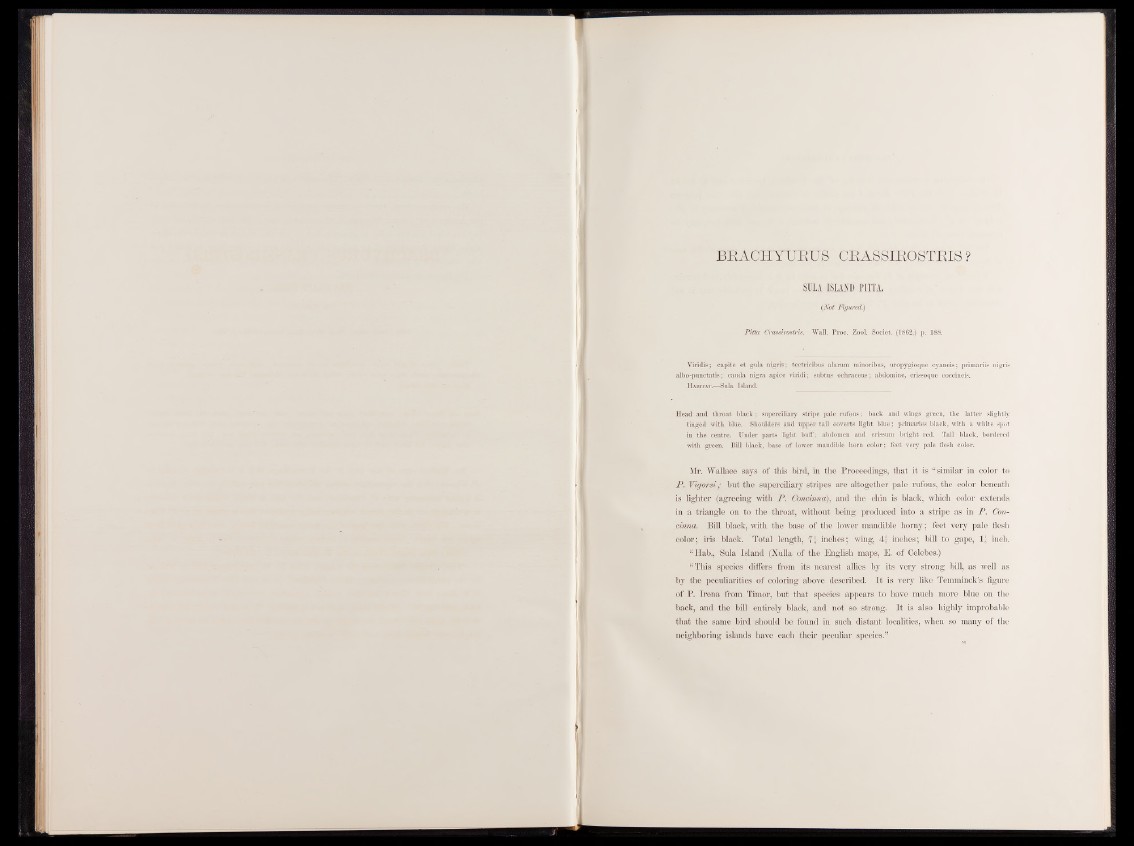
BEÄCHYUEUS CEASSIEOSTEIS ?
SULA ISLAID PITTA.
{Not Figured.)
P itta Crassirostris. Wall. Proc. Zool. Societ. (1862,) p. 188.
Viridis; capite et gula nigris; tectricibus alarum minoribus, uropygioque cyaneis; pvimariis nigris
albo-punctatis; cauda nigra apice viridi; subtus ocbraceus; abdomine, crissoque coceineis.
Habitat.—Sula Island.
Head and throat b la ck ; superciliary stripe pale rufous; back and wings green, the latter slightly
tinged with blue. Shoulders and upper tail coverts light blue; primaries black, with a white spot
in the centre. Under parts light buff; abdomen and crissum bright red. Tail black, bordered
. with green. Bill black, base o f lower mandible horn color; feet very pale flesh color.
Mr. Wallace says of this bird, in the Proceedings, that it is “similar in color to
P. Vigor si; but the superciliary stripes are altogether pale rufous, the color beneath
is lighter (agreeing with P. Oondnna), and the chin is black, which color extends
in a triangle on to the throat, without being produced into a stripe as in P. Con-
cinna. Bill black, with the base of the lower mandible horny.; feet very pale flesh
color; iris black. Total length, 71 inches; wing, 4f inches; bill to gape, l j inch.
“ Hab., Sula Island (Xulla of the English maps, E. of Celebes.)
“This species differs from its nearest allies by its very strong bill, as well as
by the peculiarities of coloring above described. It is very like Temminck’s figure
of P. Irena from Timor, but that species appears to have much more blue on the
back, and the bill entirely black, and not so strong. It is also highly improbable
that the same bird should be found in such distant localities, when so many of the
neighboring islands have each their peculiar species.”